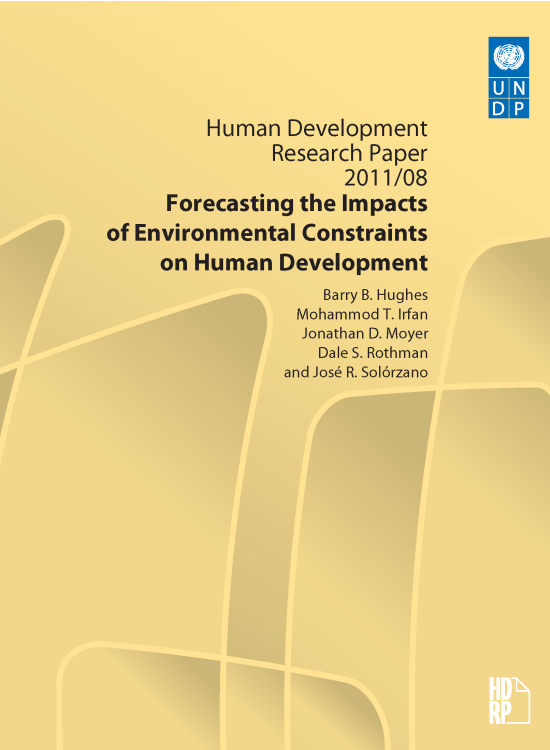Forecasting the Impacts of Environmental Constraints on Human Development

UNDP (United Nations Development Programme). 2011. Forecasting the Impacts of Environmental Constraints on Human Development. New York.
Forecasting the Impacts of Environmental Constraints on Human Development
Environmental constraints have always had and will always have important consequences for human development. It has sometimes contributed to or even caused the reversal of such development. The possibility that such constraints will grow significantly throughout this century raises the concern that the very significant advances in human development across most of the world in recent decades will slow or even reverse. We use the International Futures (IFs) integrated forecasting system to explore three alternative scenarios: a Base Case scenario, an Environmental Challenge scenario, and an Environmental Disaster scenario. Our purpose is to consider the impact of different aspects and levels of environmental constraint on the course of future human development. Using the Human Development Index (HDI) and its separate components as our key measures of development, we find that environmental constraints, directly and through a variety of indirect paths, could indeed greatly slow progress and even, in disastrous conditions, begin to reverse it. Least developed countries are most vulnerable in relative terms, while middle-income countries can suffer the greatest absolute impact of constraints and more developed countries are most resilient. Education advance is the aspect of development tapped by the HDI that is most likely to continue even in the face of tightening environmental constraints.

